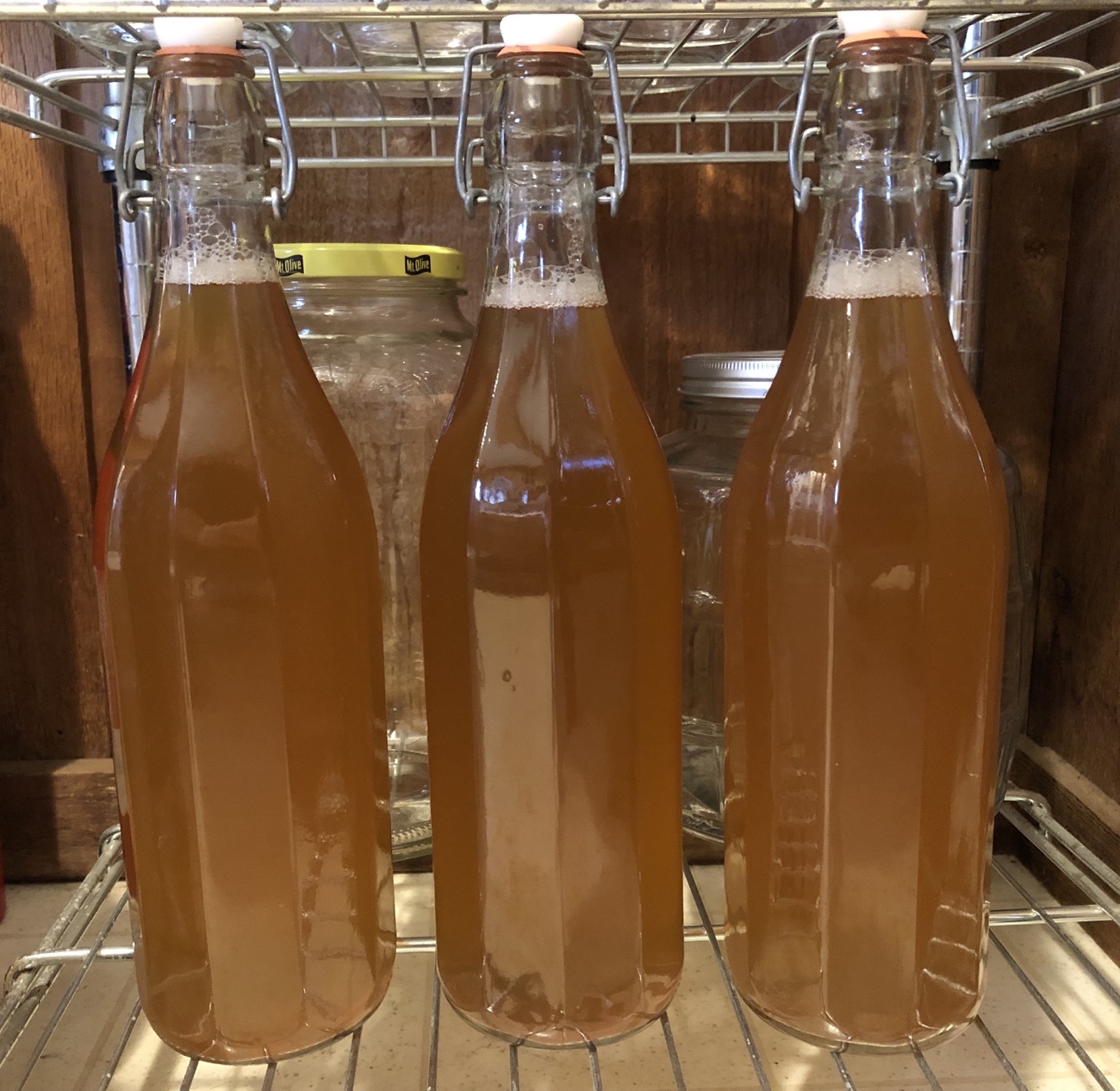
It’s ‘booch harvest day, and three gorgeous bottles of the good stuff are sitting quietly on a shelf on the fermentation station, working their second ferment magic. Sometimes I have to take a step back and marvel at the various ferments in different stages – I am, after all, a microbe farmer (mad scientist?), too.
Here’s a quick look at what’s going on in the laboratory – I mean kitchen:
Kombucha Tea (and Vinegar)
At any time, I have at least a gallon of it in first or second ferment, as well as a 2-gallon continuous brew crock that I use for vinegar and another gallon jar for vinegar. Why so much vinegar? Because I find it so useful: a splash in the animals’ water dishes, diluted as a hair rinse, in bone broth to help minerals leach from the bones, as a topical treatment for irritations/bites/abrasions, in cocktails as a bright flavor component…and more. The vinegar also stores spare SCOBYs, keeping them healthy and ready for use.

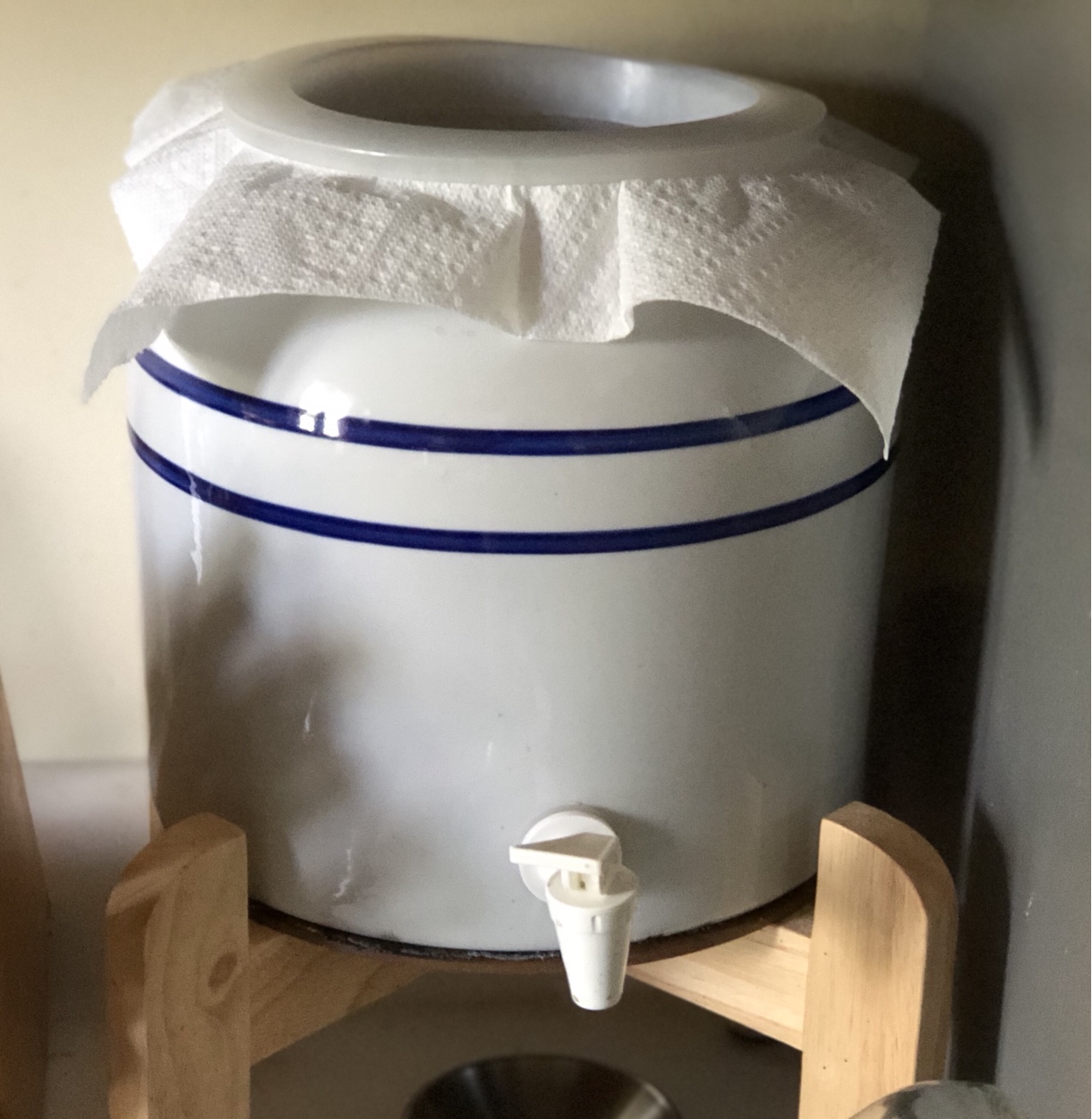
Fermented Veggies
The recently-started fermented rutabaga and golden beets have acquired a lovely bright yellow color. Fermentation is active (kombucha was the starter for this one, so there’s another use!), with lots of bubbling. These will ferment for at least two weeks, and then I’ll taste them to determine if they’re ready to join sauerkraut and kimchi in cold storage.
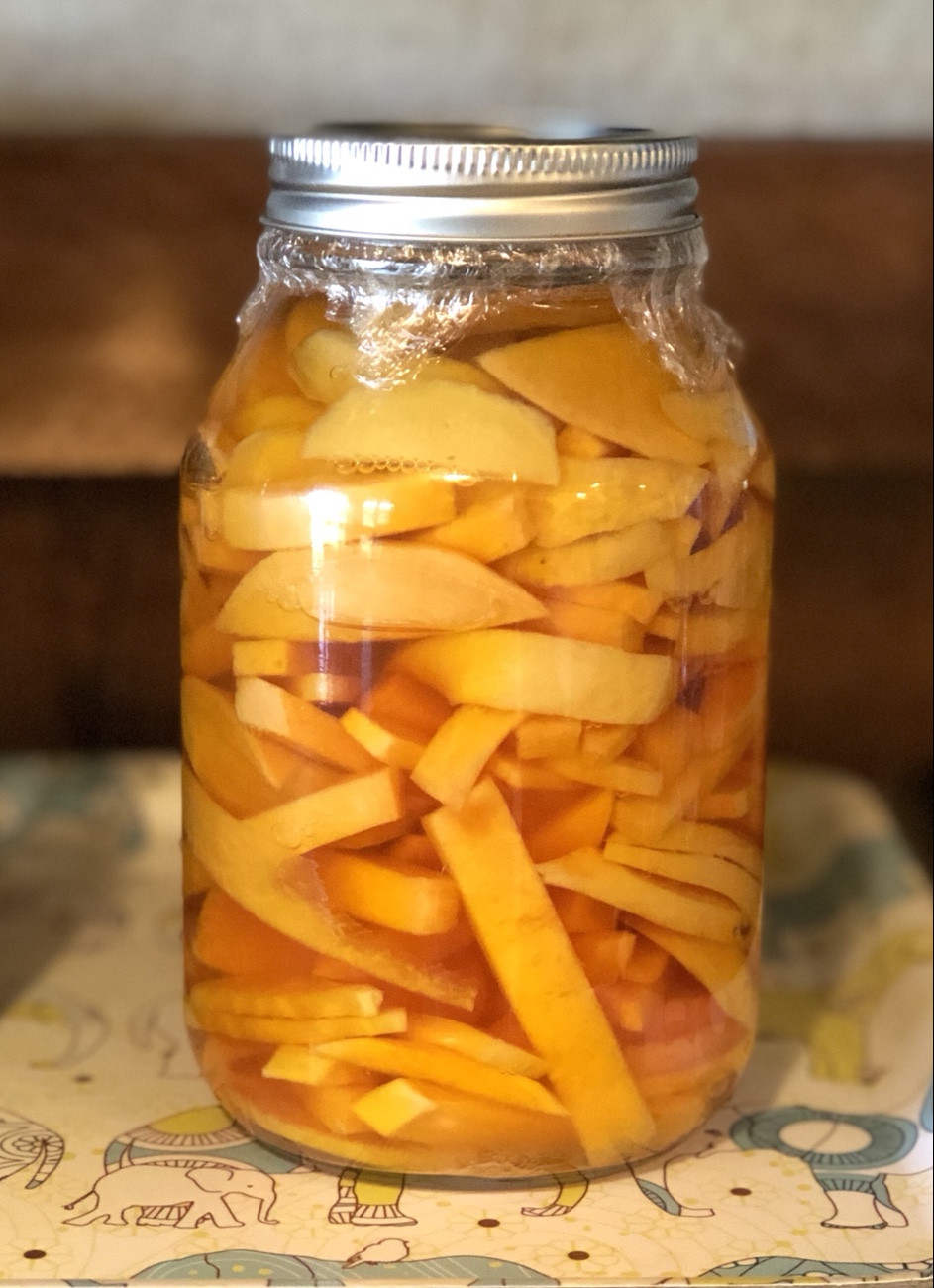
Sourdough
Audrey’s been very happy and that translates to beautiful loaves. Today was also bread-baking day: the loaf was lovely, and literally fell out of the cast iron loaf pan when it was inverted. Who doesn’t like a kitchen that smells of fresh bread? Just a little attention to ensuring that she stays comfortable and well-fed, and she provides the leavening for wholesome sourdough bread. Now that’s a good ROI!
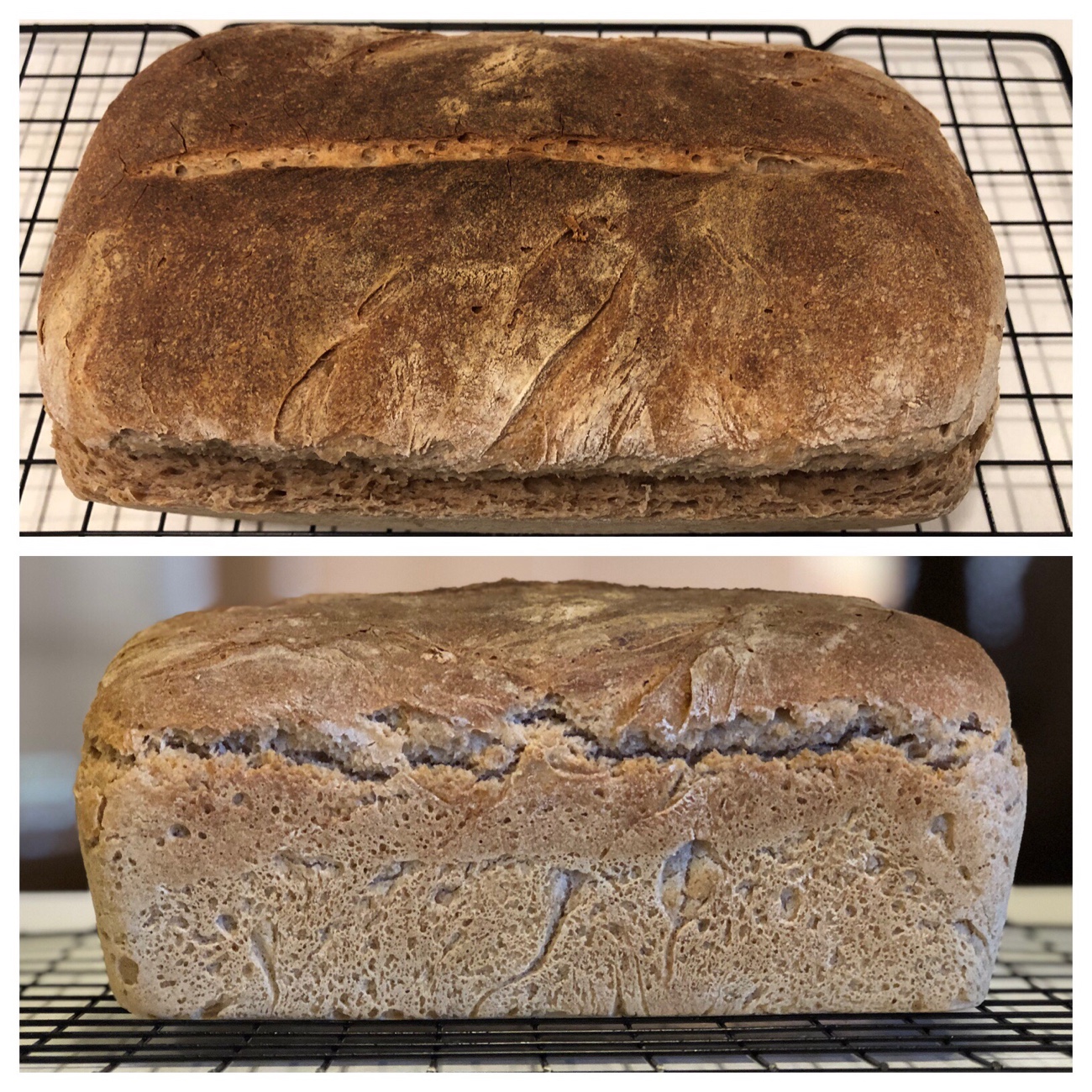
Wine
Kombucha tea wine is definitely a new favorite, and I started a couple of new batches today; well, I started the first part of the process, which is to brew the kombucha tea base. And this isn’t just regular kombucha tea – it’s a brew that uses high-yeast starter (another use for the jars of vinegar – the “high yeast starter” is actually the very murky, yeasty liquid at the bottom of the jar) and 50% more sugar than “regular” kombucha, to whip those microbes into a fermentation froth. In about a week and a half, I’ll move on to the more familiar winemaking part of the process.

There are also a couple of older batches of KT wine fermenting on the wine shelf, along with some pineapple peel and banana batches, and last but not least, the two lemon balm batches. I’m contemplating what to make next…so many tempting choices!
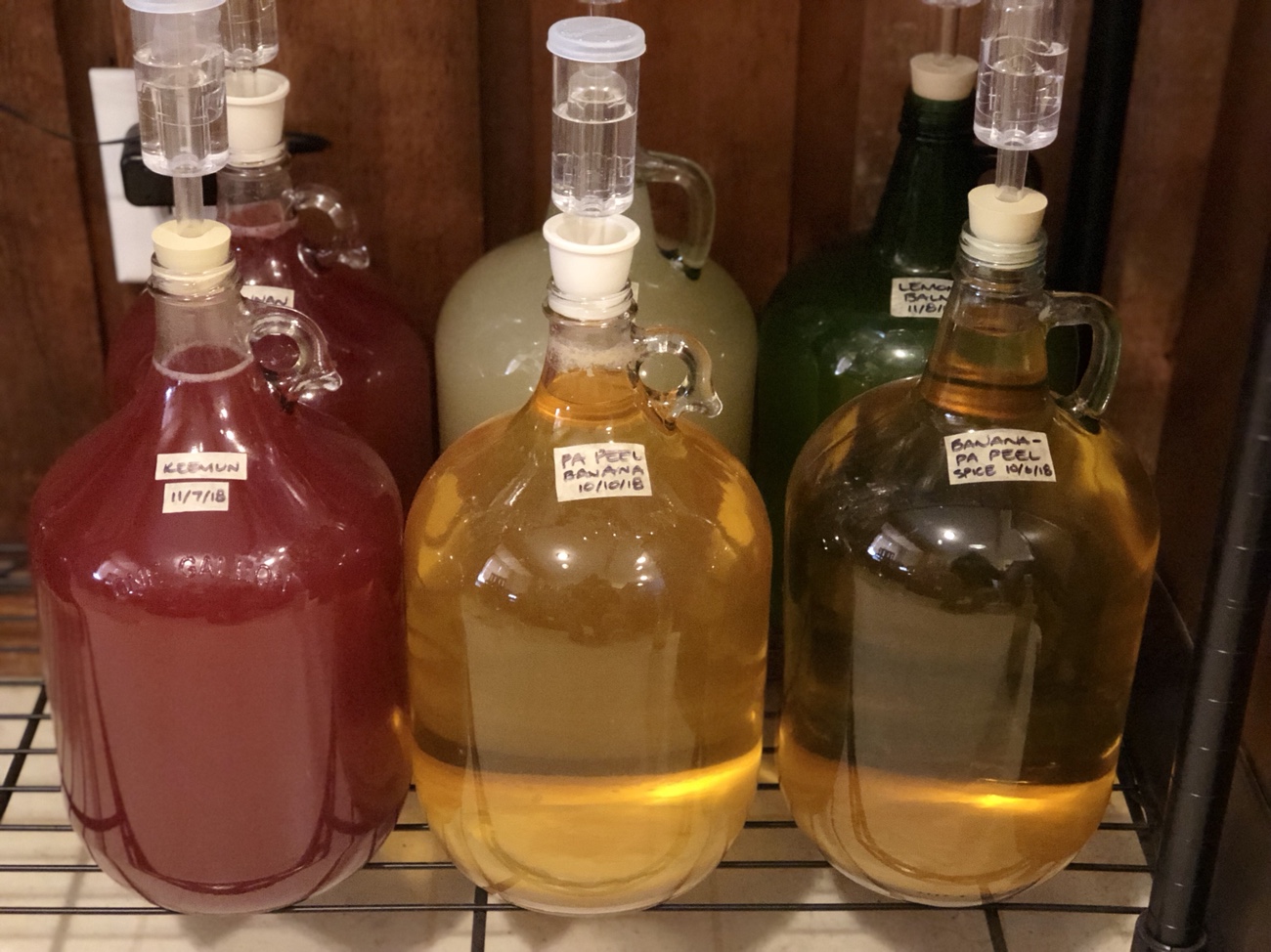
Makgeolli
I just started a batch of makgeolli (막걸리) yesterday, so the view into the fermenter isn’t too exciting yet, but I know the nuruk (누룩) is hard at work fermenting that fresh rice. In a few days, the microbes (which include yeast, fungi, bacteria, and mold) will liquefy it – a fascinating process. A daily stir for the next four days, then straining and a second ferment for another four days, and it should be ready (though I may let it ferment for longer, depending on how it tastes at that point).
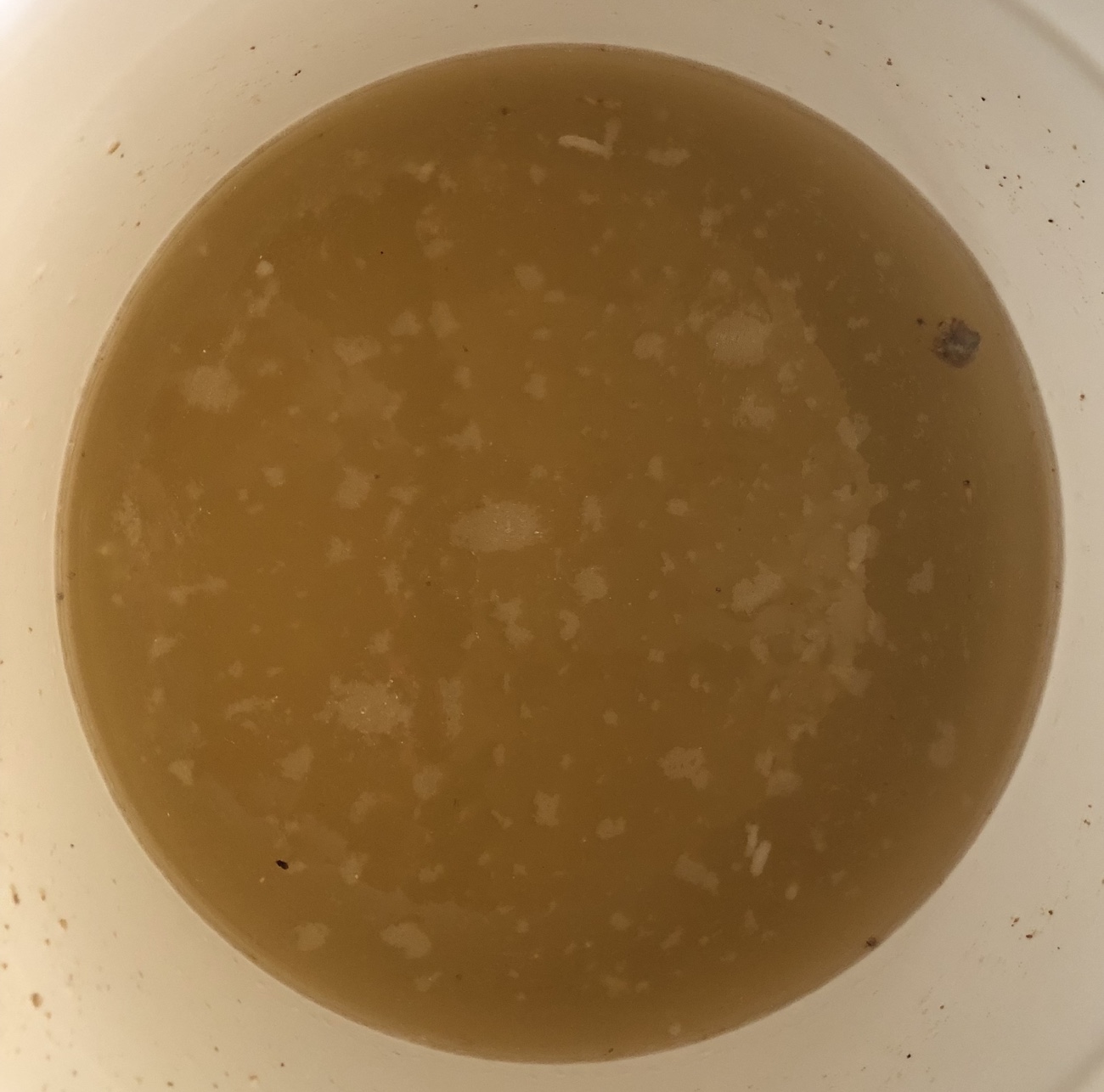
Water Kefir
A quick-finishing ferment, water kefir is ready every couple of days around here. Having procured some very ripe Bartlett pears, I’ve been mashing them (they’re that soft) and using them for the second ferment. Pear water kefir? Pure bliss, and such a quintessentially “fall” flavor!
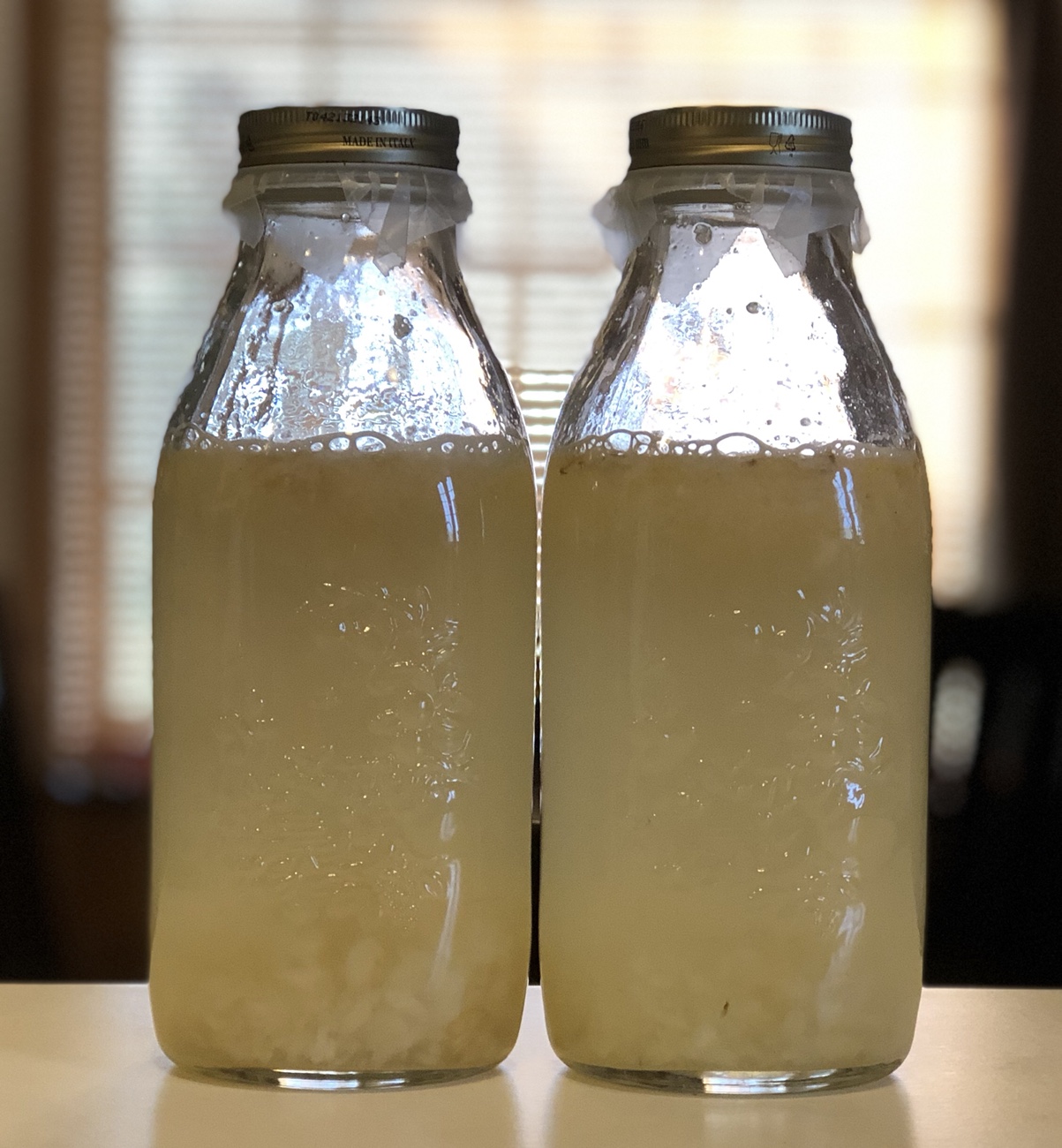
I also have some super ripe bananas that are fantastic for water kefir 2F, too (add a splash of spiced rum to either the pear water kefir or banana and you have a stellar adult beverage). As both kinds of fruit are reaching the point of being overripe, I’ll need to either use them soon or freeze them for use later. Either way, they’re on my radar and they will become something enjoyable.
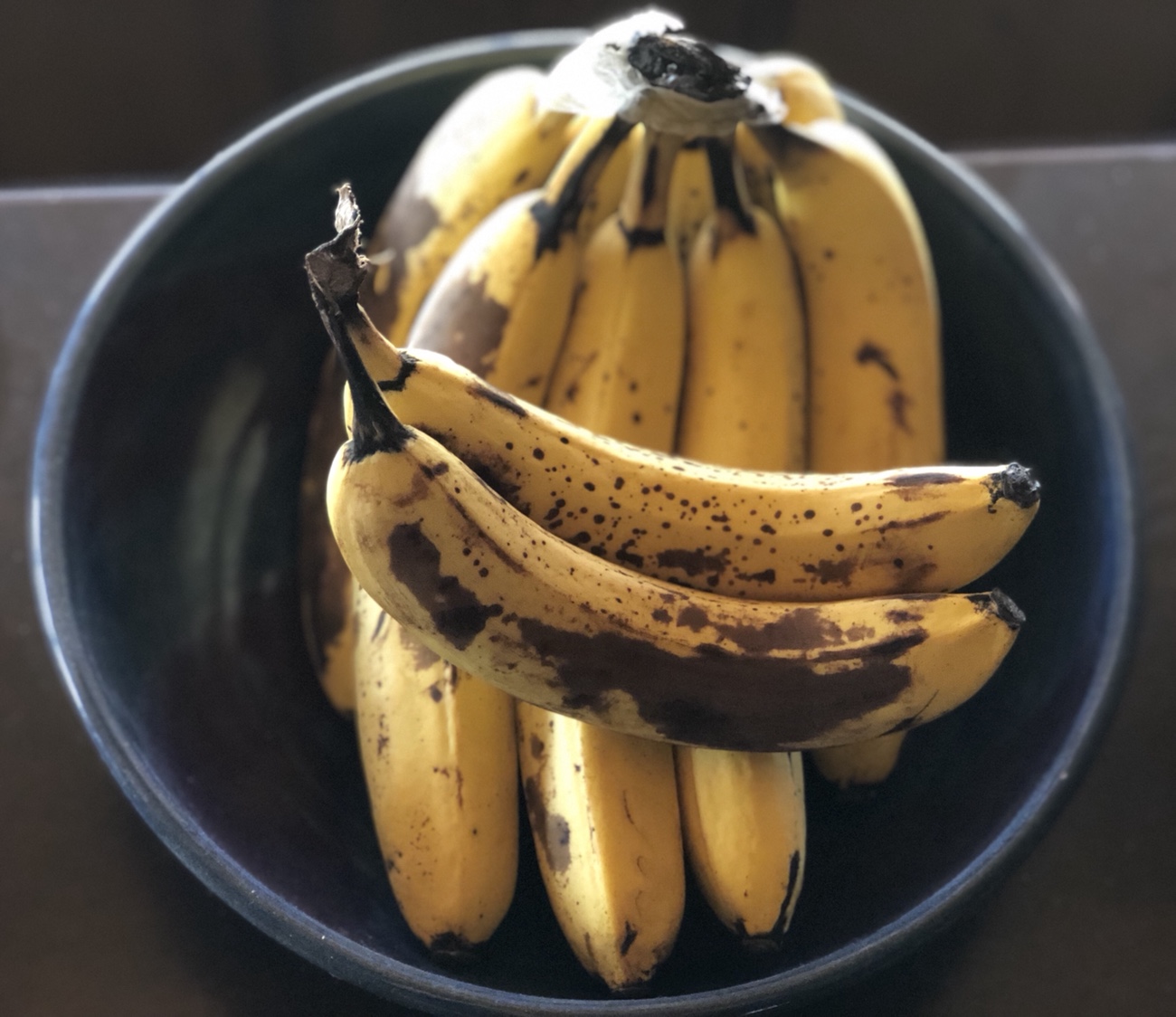
Happy fermenting…and remember to practice no food waste! I can’t wait to try a recipe from a cookbook called “Eat It Up!” by Sherri Brooks Vinton that I recently purchased – it’s all about reducing food waste by using parts of food that we might not normally consider using.
